Understanding and Addressing Dog Behavior: Solve & Bond!
Ever had that moment when your pup’s antics left you both amused and bewildered? You’re not alone; many dog owners experience behavior quirks with their furry friends. In “Understanding and Addressing Dog Behavior: Solve & Bond!”, we dive straight into what makes dogs tick and the hiccups they might show along the way. From the get-go, it’s vital to recognize that while some behaviors may seem puzzling, there’s often a reason behind them. Unraveling these canine conundrums not only strengthens the bond between you and your pooch but ensures a safer and happier environment for all.
Recognizing the tell-tale signs and understanding why our dogs do what they do can often feel like decoding a mystery. From a pup that can’t stop barking at the wind to one that hides at the sound of a blender, dogs have their own set of behaviors that can be perplexing. These behaviors aren’t just random; they’re rooted in their instincts, past experiences, and even their daily interactions with us humans. It’s a dynamic world for our four-legged pals, where every scent, sound, and sight can trigger a reaction. As we peel back the layers on common behavioral problems, we’re committed to providing insight and advice that’s not just a quick fix but a true understanding of your dog’s world.
As we transition to the next section, “What Are Common Behavior Problems in Dogs?”, we’ll look at specific examples of behavior issues that many dog owners face. From the pesky chewer to the overzealous greeter, we’ll dissect these habits and provide practical solutions. Rest assured, by the end of this journey, you’ll be well-equipped to guide your dog towards better behavior, ensuring a more harmonious life together. So, let’s continue unraveling the mysteries of our canine companions and turn those behavior blues into bonding breakthroughs.
What Are Common Behavior Problems in Dogs?
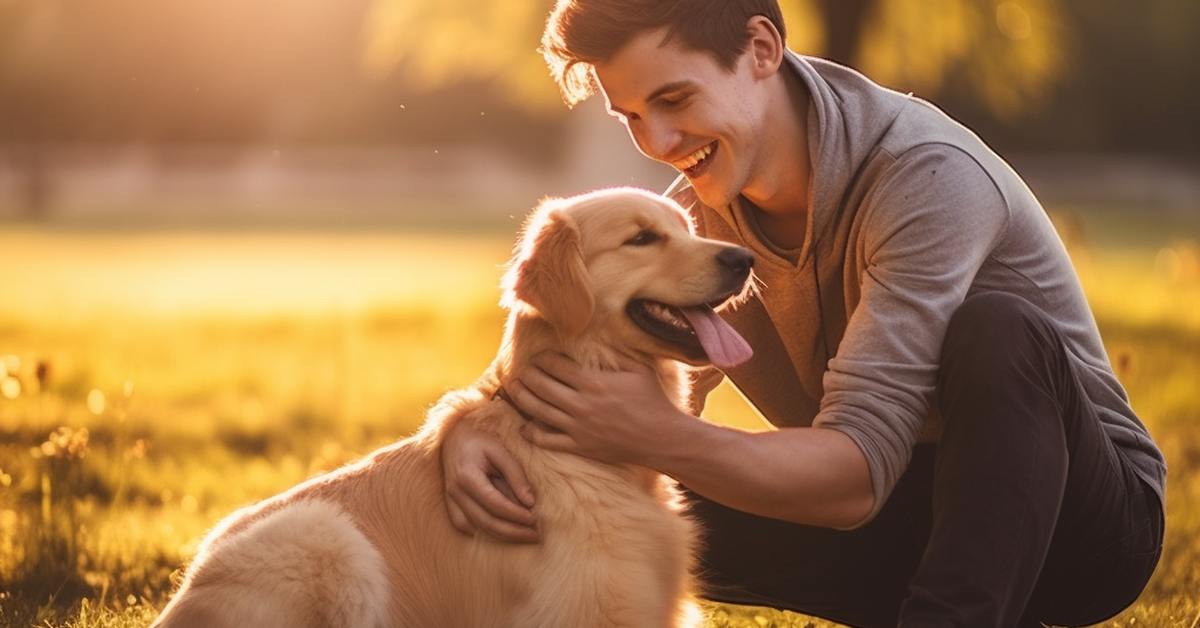
When your four-legged friend starts acting up, it can turn your home into a place of chaos. Let’s look at some typical doggy dilemmas, like when Fido thinks your shoe is a chew toy or Spot won’t stop yapping at the mailman.
- Aggression: This can range from growling and snapping to biting.
- Barking: Sure, it’s their way of chatting, but non-stop noise can be a headache.
- Chewing: Dogs love to gnaw, but it’s a problem when it’s your belongings.
- Anxiety: Just like us, dogs can get stressed out too, leading to all sorts of trouble.
These behaviors might drive you batty, but remember, they’re often just dogs being dogs. With a bit of know-how, you can teach your furry pal better habits.
Impact on Daily Life
Disruptive dog behaviors don’t just affect your peace and quiet; they can also:
- Make it tough to have guests over without a fuss.
- Put a strain on your bond with your pet.
- Lead to damaged property or even injury.
Guidance Is Key
Changing these behaviors is totally doable with some guidance and patience. It’s about understanding what’s normal for our canine companions and what’s not.
List of Common Dog Behaviors:
- Growling when touched while eating
- Barking at other dogs during walks
- Destroying furniture when left alone
- Pacing or whining when you grab your keys
Table: Typical Dog Behaviors and Solutions
| Behavior | Why It Happens | Quick Solution |
|---|---|---|
| Barking | Attention-seeking, alerting, anxiety | Training, more exercise |
| Chewing | Teething, boredom, stress | Safe chew toys, more playtime |
| Aggression | Fear, territorial, pain | Professional training, health check |
| Anxiety | Separation, fear, change in environment | Consistency, calming techniques |
Remember, each dog has its own personality. What works for one may not work for another. Ready to turn the tide on troublesome traits? Let’s focus on one behavior at a time. Start with the most disruptive one to your daily life and go from there.
Now that we’ve covered the common behavioral quirks of our pooches, it’s natural to wonder why they do what they do. Could it be something in their past, or maybe it’s the way they’re wired? Understanding the root cause is the first step to building a happier life together. Keep an eye out for more insights to deepen that bond with your furry friend.
Why Do Dogs Exhibit Problematic Behaviors?
Why might your furry friend suddenly start chewing shoes or barking non-stop? Dogs might act out for many reasons, and it’s up to us, their human pals, to figure out why. Often, it’s in their DNA. Like how some dogs were bred to bark to alert, others might be hardwired to herd or chase. But that’s only part of the story.
Your pup’s surroundings play a big role, too. A dog that’s cooped up all day might dig up your garden just to stay busy. If they’ve had a tough past, they might be scared or act aggressive. And don’t forget training – or a lack thereof. Not teaching your dog the ropes can lead to a whole bunch of rascally behaviors.
- Instinct and breeding: Some dogs do things because that’s what their breed is known for. Think about it – a beagle that sniffs everything in sight is just following its nose, as it was bred to do.
- Home life: A dog needs space, pals, and things to do. Without these, they might get bored and start causing trouble.
- Their past: Dogs remember, just like us. Bad experiences can lead to skittish or even naughty behavior.
- Learning the ropes: No training means no rules. If dogs don’t learn what’s okay and what’s not, they’ll make up their own, and you might not like them.
Table: Common Canine Breeds and Typical Behaviors
| Breed | Typical Behavior | Potential Problem |
|---|---|---|
| Labrador Retriever | Friendly and Energetic | Destructive Chewing |
| German Shepherd | Protective and Loyal | Excessive Barking |
| Border Collie | Intelligent and Eager to Work | Obsessive Herding |
| Shih Tzu | Affectionate and Playful | Separation Anxiety |
| Rottweiler | Confident and Brave | Guarding/Aggression Issues |
| Beagle | Curious and Merry | Excessive Sniffing/Digging |
List: Factors Influencing Dog Behavior
- Breed instincts: Each breed has unique traits.
- Exercise: Dogs need it to burn off energy.
- Socialization: Meeting new people and dogs is key.
- Training: Learning commands and rules helps a lot.
- Attention: Just like us, dogs want to feel loved.
- Health: A sick dog might act totally different.
Dogs are part of our lives, and when they act up, it’s a cry for help. They might be bored, scared, or just confused about what we want from them. It’s like they’re saying, “Hey, I need something!” Maybe it’s a game of fetch, a new friend, or just a good, long walk. But sometimes, it’s more about feeling safe and figuring out their place in your pack.
Remember, pups look to us for guidance. They need to know the house rules, and it’s our job to teach them with patience and treats – lots of treats. And if you’ve got a rescue dog, they might need extra TLC to feel at home.
Still, every dog is different, just like we are. Sometimes, you need to play detective to figure out what’s bugging your buddy. Maybe check out some helpful tips from pros at places like OVRS or the ASPCA. They’ve got the scoop on doggy do’s and don’ts.
So, say your pup’s got a case of the jitters every time you leave. That’s rough. But there are ways to teach them that it’s okay, you’ll come back. It might take time, but stick with it, and you’ll see changes.
My own dog, a sprightly spaniel named Bingo, used to chew on everything when I left home. It drove me bonkers. But then I learned he just needed to know I’d return. So, I started leaving for just a minute at a time, then longer and longer. And guess what? No more chewed-up sneakers.
As we look to help our dogs be their best selves, remember the little things that make a big difference. A routine they can count on, some playtime, and a good chat. Yes, talk to your dog! They might not get every word, but they feel the love. And when they feel that love, they want to do right by you. It’s a win-win for both of you.
Next time you catch your dog in the act of being a little rascal, take a breath. Think about what they need. Maybe it’s a good run or a puzzle toy to keep their brain busy. And if you’re feeling stuck, don’t fret. There’s help out there, from books to behavior classes. The journey to a well-behaved dog is all about understanding, patience, and a whole lot of love. And that’s the real yappy life.
How to Identify Behavioral Issues in Your Dog
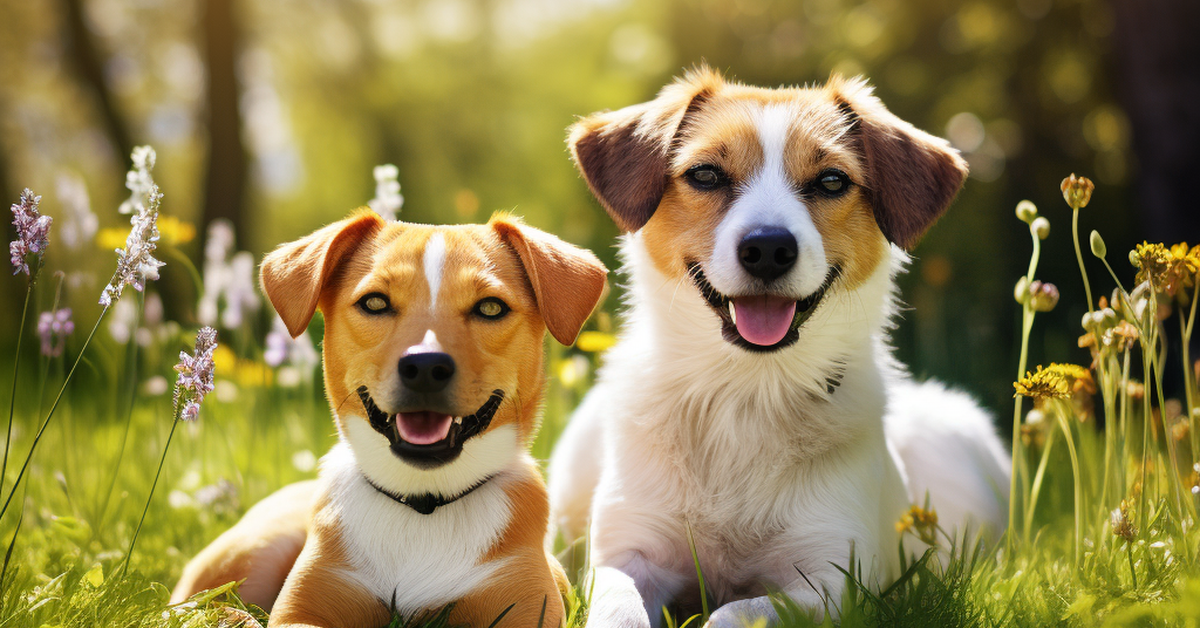
You might wonder, “How can I tell if my dog’s behavior is a problem?” Start by watching your furry friend closely. Dogs speak volumes through their actions. These could be red flags when they show signs like excessive barking, chewing, or aggression. Remember, it’s not just about what they do, but also how often and in what context.
- Observation is key. Spot changes in behavior early by keeping an eye on patterns.
- Look for signs. Aggression, fearfulness, or destruction beyond puppy playfulness could be problematic.
- Professional help might be necessary for severe cases, like when safety is at risk.
Dogs, like people, have unique personalities. Some might be lively, others more laid-back. But if your pal’s actions seem off, it’s smart to pay attention. Ask yourself, are they suddenly growling more? Could they be destroying shoes out of boredom or anxiety?
Here’s a quick table to help you decode common behaviors:
| Behavior | Possible Issue | Action to Consider |
|---|---|---|
| Excessive barking | Anxiety or Alertness | Training or environment changes |
| Chewing on items | Teething or Boredom | Provide appropriate toys |
| Aggression | Fear or Dominance | Seek professional advice |
Sometimes behaviors that seem worrisome are just quirks. Yet, it’s always better to be safe than sorry. For instance, a staggering 70% of dogs show some form of anxiety. So, if your dog is part of this statistic, you’re not alone, and there are ways to help them.
If your dog seems to be having a tough time, it doesn’t mean they’re ‘bad’. They might just need a bit of extra support to get back on track. Here’s what you can do:
- Keep a record of when the behavior happens
- Notice what seems to trigger it
- Try to see if there’s a pattern
Now, let’s look at how you can turn these insights into action. Just like you’d help a friend in need, your dog relies on you to guide them through rough patches. So, if they’re acting up, it’s time to step in with care.
For those who love their pups to bits, Yappy Life offers a treasure of tips and guides. Taking a peek at their article on keeping pets safe during holidays can prevent mishaps and keep tails wagging. It’s a great first step in nurturing a healthy, happy bond with your dog.
As we wrap up, remember that understanding your dog’s behavior is just the beginning. Next, you’ll learn to address these issues with love and patience. Imagine creating a stronger bond as you both learn and grow. Now, isn’t that a journey worth taking?
Techniques for Addressing and Modifying Dog Behavior
Dog lovers, it’s time to tackle those pesky behavior issues that can sometimes put a damper on the joy of having a furry friend. You know, the ones that make you scratch your head and think, “Why does my pooch do that?” We’re here to guide you through some effective strategies that work wonders for those tail-wagging troublemakers.
- The Power of Praise: Remember, dogs thrive on approval. Rewarding good behavior with a hearty “Good dog!” and a tasty treat does more than just make their day; it reinforces the actions you want to see more often.
- Redirection Works Wonders: When your dog is up to no good, gently steer them towards an activity that’s positive. This teaches them what’s okay to do instead of the naughty stuff.
- Keep Calm and Desensitize: Slow and steady wins the race when it comes to getting your dog used to things they’re not fond of. Gradually introduce them to the scary stuff with lots of love and patience.
- Set the Scene for Success: Dogs crave routine and boundaries. Make sure they know their limits and keep the rules consistent; it’ll make for a happier, more well-behaved pup.
Here’s a stat to chew on: Studies show that dogs trained with positive reinforcement are more likely to behave and less likely to develop problem behaviors. Now that’s something to wag about!
Structured Training Table
| Training Aspect | Description | Benefit |
|---|---|---|
| Positive Reinforcement | Rewarding good behavior with treats and praise | Encourages repetition of desired actions |
| Redirection | Guiding your dog to an acceptable activity when they misbehave | Reduces unwanted behavior by providing alternatives |
| Desensitization | Gradually exposing your dog to stimuli that cause fear or anxiety | Helps your dog become more comfortable in various situations |
| Consistency | Maintaining the same rules and routines every day | Provides a sense of security and understanding for your dog |
Let’s not forget that a yappy life calls for a happy life. So, when your pup’s behavior is a bit off, just go back to basics and remember that with the right approach, you can solve and bond!
Now, speaking of bonding, there’s another element to consider when you’re working through behavior issues. Sometimes, an extra helping hand can make a world of difference. Picture this: a professional who understands the ins and outs of doggy behavior, someone who can provide personalized, expert advice to get your best friend back on track. While we won’t dive into that here, know that it’s an option worth considering as part of your journey towards a more harmonious home life with your beloved canine companion.
The Role of Professional Help in Solving Behavioral Problems
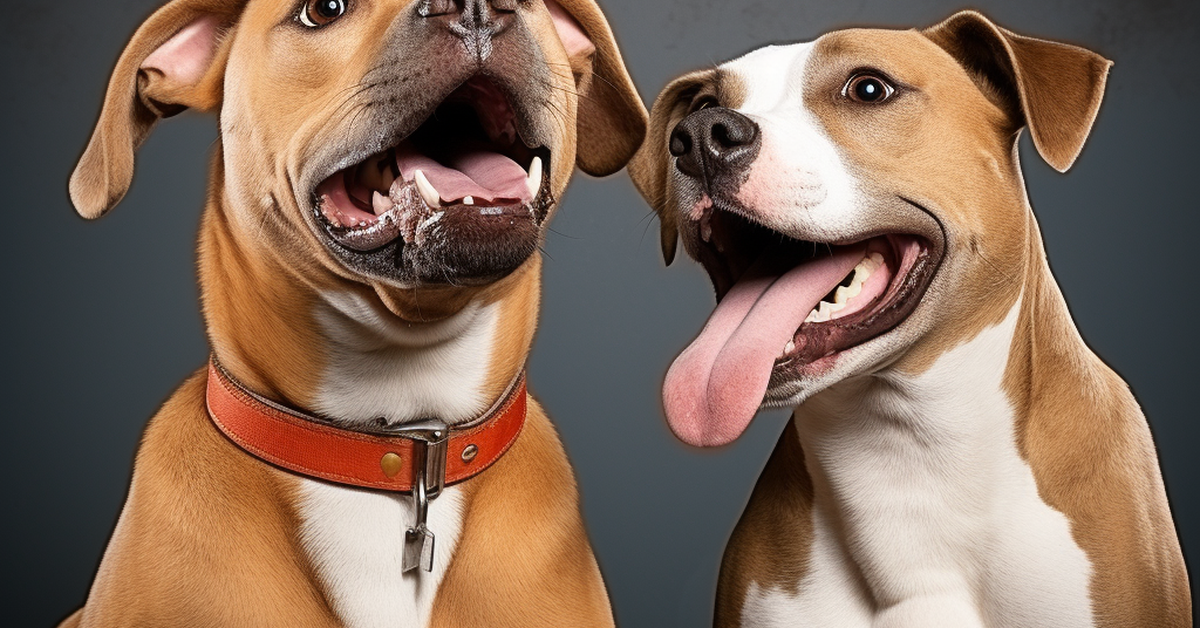
Dealing with your dog’s behavior issues can be like trying to solve a tough puzzle. Sometimes, you need the help of a pro. Seeking a pro’s guidance is smart when you’ve tried all you know. They’ve got skills and know-how that can make a world of difference.
- Experts can see things we miss. They spot little cues in your dog’s actions. These pros use techniques that are kind to your pup but super effective.
- There are different folks for this job. Some are trainers, others are behaviorists. Trainers teach your dog new commands and tricks. Behaviorists dig deep to understand why your dog acts a certain way.
- Picking the right help matters. Look for someone with good reviews and the right training. They should have a history of handling issues like yours.
When you’ve got a dog that jumps like a kangaroo or barks like there’s no tomorrow, it’s time to call in the cavalry, the dog pros. They come with a toolbox full of tricks to help your dog learn to chill out or follow orders.
| Professional Help | What They Offer |
|---|---|
| Dog Behaviorists | Understand why dogs do what they do |
| Dog Trainers | Teach dogs new behaviors and commands |
| Vet Behaviorists | Can prescribe meds if needed |
Here’s a neat fact: About 76% of pet owners have seen improvements after getting professional help for their dog’s behavior. That’s a big deal!
If you’ve got a pooch that makes you scratch your head, you might think, “Where do I find help?”. Good news! There are pros waiting to lend a hand. Check out these resources for more on getting the help your dog needs:
Your dog’s not just a pet; they’re your sidekick. So, it’s key to help them be their best. After all, a happy dog means a happy life. Next, we’ll look at ways to keep those tails wagging and avoid trouble before it starts. We’ll get into how setting up the right habits early on can save you from a heap of headaches later.
Preventing Behavior Problems Before They Start

Dog guardians, listen up. You know that feeling when your furry friend just won’t behave? It’s tough, right? But what if I told you there’s a way to prevent these behavior issues before they even start? Yep, it’s all about nipping those bad habits in the bud with early training and socialization.
Early Socialization and Training: Why It’s Key
Ever seen a pup that’s cool as a cucumber around new folks and other dogs? Chances are, they had a good dose of socialization when they were young. It’s like this – the more experiences they have early on, the less likely they are to freak out later. So, invite people over, introduce your pooch to well-mannered dogs, and expose them to different places. It’ll pay off big time!
Routine and Predictability: The Dynamic Duo
Dogs dig predictability. It makes them feel secure. Stick to a schedule for meals, walks, and bedtime, and watch those behavior problems fade away. A set routine reduces anxiety and helps your dog understand what’s expected of them. Consistency is your friend here.
Mental and Physical Stimulation: The Cure for Boredom
Boredom can turn your sweet dog into a little troublemaker. Keep their brains and bodies active to stop those bad behaviors before they start. Try puzzle toys, regular exercise, and training sessions to keep their minds ticking and their paws moving. It’s a game-changer, seriously.
Now, let’s break it down even further with some stats and a handy table:
- Statistics show that dogs who lack mental stimulation are more likely to develop behavior problems. In fact, a study revealed that 64% of dogs with behavioral issues were not given regular mental enrichment activities.
- Implementing a routine can decrease the likelihood of behavior problems in dogs by up to 82%. That’s a huge difference!
Here’s a quick table to help you remember the key points:
| Key Aspect | Reason It’s Important | How It Helps |
|---|---|---|
| Early Socialization | Prevents fear and aggression | Builds confidence |
| Training | Establishes good habits | Reduces confusion and frustration |
| Routine and Predictability | Gives a sense of security | Lowers anxiety |
| Mental Stimulation | Prevents boredom-related issues | Keeps the mind sharp |
| Physical Exercise | Burns excess energy and maintains health | Reduces destructive behavior |
With these strategies, your dog’s behavior should start shaping up in no time. And hey, if you need a bit more help, there’s plenty of info at our fingertips. Check out resources like this comprehensive guide to dog behavior for deeper insights.
Oh, and if you’re planning to leave your dog with a sitter while you travel, you’ll want to make sure they’re on their best behavior. Take a peek at Yappy Life’s advice on this topic here.
Remember when I first started training my own dog? I made sure to follow these exact steps. Trust me, it made a world of difference.
As you apply these tips and your dog starts to behave better, you’ll find your bond growing stronger. You’ll be ready to tackle the world together, whether you’re lounging at home or out on an adventure. It’s all about creating a happy, harmonious life with your four-legged pal. And that’s what the yappy life is all about!
Conclusion
Hey there, fellow dog lovers! We’ve been wagging our way through the ins and outs of pooch behavior, and boy, have we uncovered a treasure trove of tips. It’s been a wild ride, but remember, the end goal is a happy, tail-wagging companion. Whether your furry friend is a bouncy Frenchie or a loyal Lab, each one is a cherished part of the family. We get it, ’cause here at Yappy Life, it’s all about putting our four-legged pals first.
Now, don’t fret if your pup’s antics have you scratching your head. We’ve all been there, wondering why our beloved Boxer is more boxer than cuddler. But there’s hope! With a sprinkle of patience and a dash of understanding, we can guide our dogs to better behavior. And if things get ruff, professional help is just a bark away – there’s no shame in calling in the cavalry.
Frequently Asked Questions about Understanding and Addressing Common Behavior Problems in Dogs
What are the most common behavior problems in dogs?
The most common behavior problems in dogs include aggression, barking, chewing, digging, separation anxiety, jumping up on people, begging, chasing, and not coming when called. These behaviors can be triggered by various factors, such as fear, boredom, excess energy, or lack of training.
Why does my dog bark excessively and how can I stop it?
Dogs bark for numerous reasons including attention-seeking, alerting, boredom, responding to other dogs, or because of anxiety. To stop excessive barking, first, identify the cause and then address it. Training methods include teaching the “quiet” command, providing adequate exercise and mental stimulation, and avoiding reinforcement of the barking. In some cases, consulting a professional trainer or behaviorist is necessary.
How do I deal with my dog’s aggression towards other dogs or people?
Dealing with aggression requires understanding its root cause, which can include fear, territorial behavior, or a lack of socialization. It is critical to ensure everyone’s safety first. Seek the assistance of a professional dog trainer or a veterinary behaviorist. They can create a behavior modification plan and may suggest desensitization or counter-conditioning techniques. In some cases, medication may be prescribed to help manage the behavior.
My dog chews on everything, how can I get him to stop?
Chewing is a natural behavior for dogs, but it becomes a problem when it’s directed at inappropriate items. To stop destructive chewing, provide plenty of chew toys, and make sure your dog gets enough exercise to burn off energy. Keep personal items out of reach, and use deterrents like bitter apple spray on items you don’t want chewed. Consistently redirect chewing to appropriate items and praise your dog for using them.
What can I do about my dog’s separation anxiety?
To address separation anxiety, start by creating a safe and comfortable space for your dog. Desensitization and counter-conditioning techniques can gradually get your dog used to being alone. Leave for short periods and slowly increase the time spent away. Ensure your dog has plenty of exercise and mental stimulation. In severe cases, a professional may recommend medication or a more intensive behavior modification program.
How can I get my dog to stop jumping up on people?
Training your dog not to jump up involves consistency and positive reinforcement. Teach your dog an alternative behavior, such as sitting, to gain attention. Ignore jumping behavior and only give attention when all four paws are on the ground. Reward your dog for keeping all paws on the ground when greeting people. It’s also important to ensure everyone who interacts with your dog follows the same rules.
Why does my dog dig, and how can I deter this behavior?
Dogs may dig due to instinct, hunting behavior, comfort-seeking (like nesting or cooling off), hiding possessions, or trying to escape. To deter digging, provide plenty of exercise, supervise outdoor time, and create a designated digging area where it’s permissible for them to dig. Deterrents such as chicken wire buried under the soil in non-dig zones can also help.
How can I teach my dog to come when called?
Training your dog to come when called, also known as recall, involves patience, practice, and positive reinforcement. Start in a distraction-free environment and gradually move to areas with more distractions. Always use a happy and enthusiastic tone, and reward your dog with treats, play, or affection when they come to you. Never punish your dog after they come to you, even if it takes longer than expected.
What should I do if my dog is chasing cars, animals, or people?
Chasing is a natural predatory instinct in dogs, but it can be dangerous. To address this behavior, keep your dog on a leash in areas where they may be tempted to chase. Teach a reliable recall command and “leave it” command. Provide adequate exercise and mental stimulation. Consider professional training or behavior modification if the behavior persists.
How can I stop my dog from begging for food at the table?
To stop your dog from begging, avoid giving them food from the table or while you’re eating. Train them to go to a specific spot, like a bed or mat, during meal times. Reward them for staying in that spot with treats or toys, but only after you finish eating. Consistency from all family members and guests is crucial to successfully stopping this behavior.

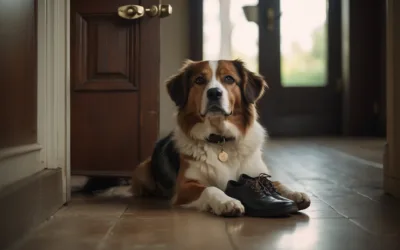
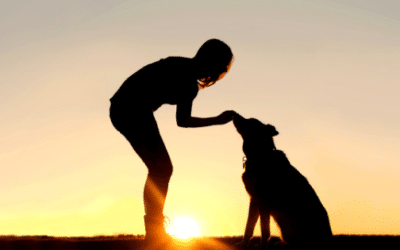
Recent Comments